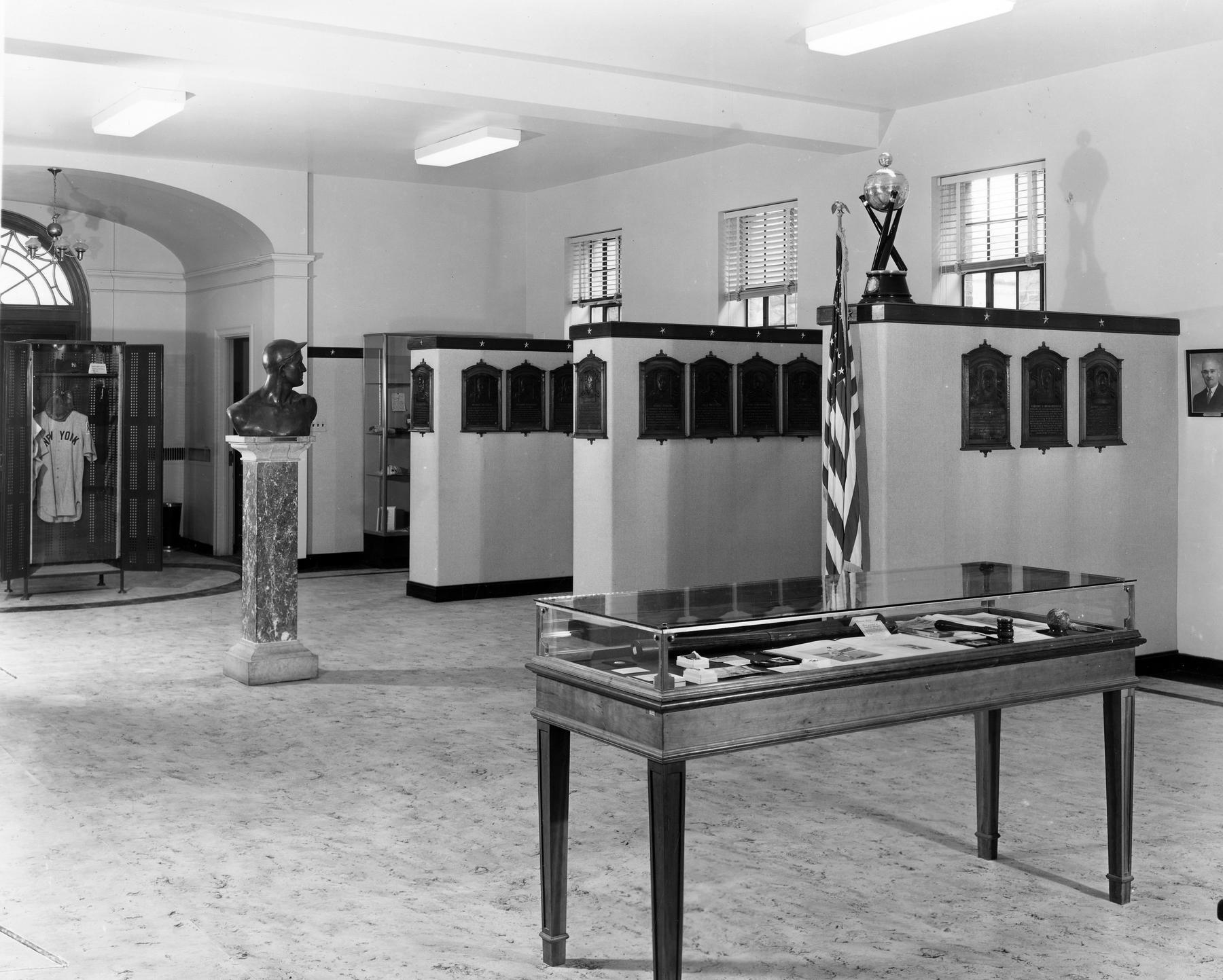Who rearranged the furniture?
But following a major renovation of the Gallery and plaque refurbishment in the 1980s, the plaques were re-ordered in nearly the way they are today – with the earliest Hall of Fame classes starting on the right side (as you look into the Gallery) and moving forward in time, then returning to the front of the Gallery to head up the left side chronologically. At the time, this left about a decade of plaque space.
“During (1985 and 1986), we had all the plaques down,” said Ted Spencer, the Museum’s former Chief Curator. “And when we reinstalled them, we moved them slightly closer to each other so we gained about 10 more spaces.”
But with the election of the seven-person Class of 1999, the final left-side alcove was filled to capacity and beyond. The Museum curatorial team, however, had anticipated this and enacted a plan to turn the Gallery rotunda – enclosed in 1993 and used after that for short-term exhibits – into more plaque space.




